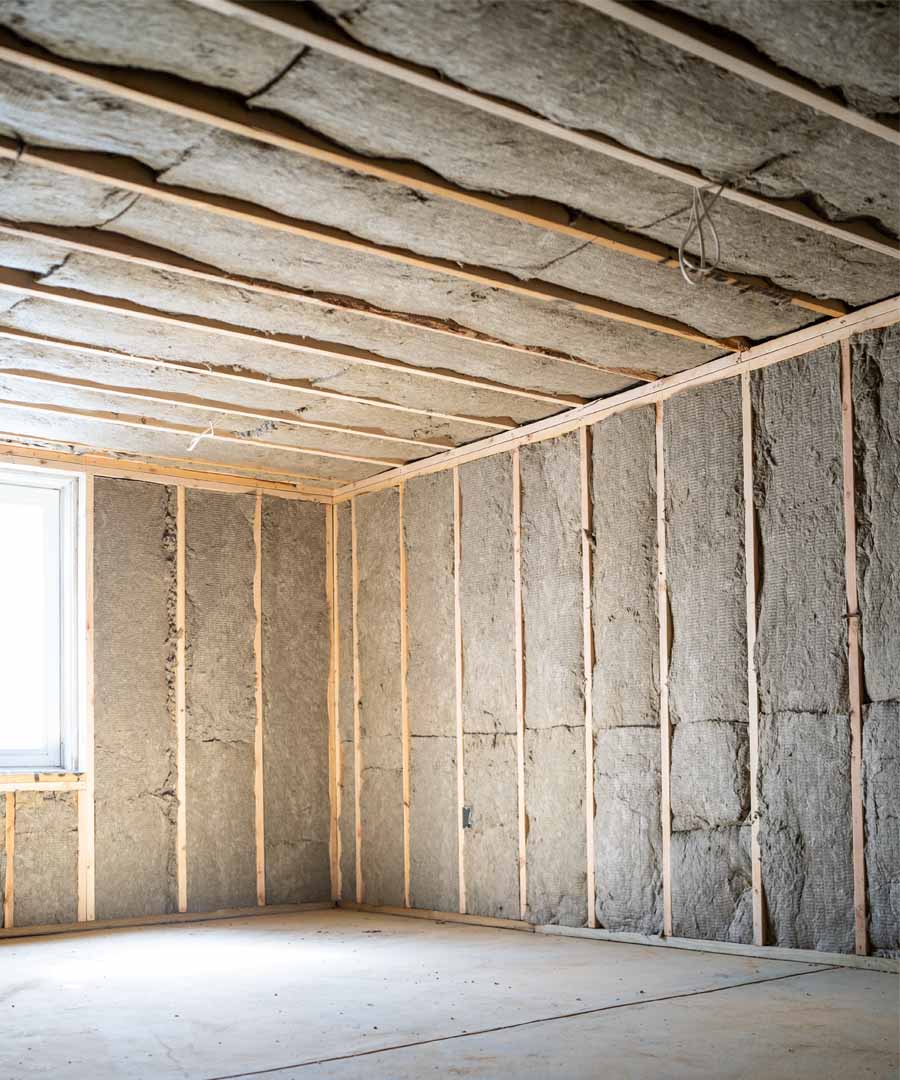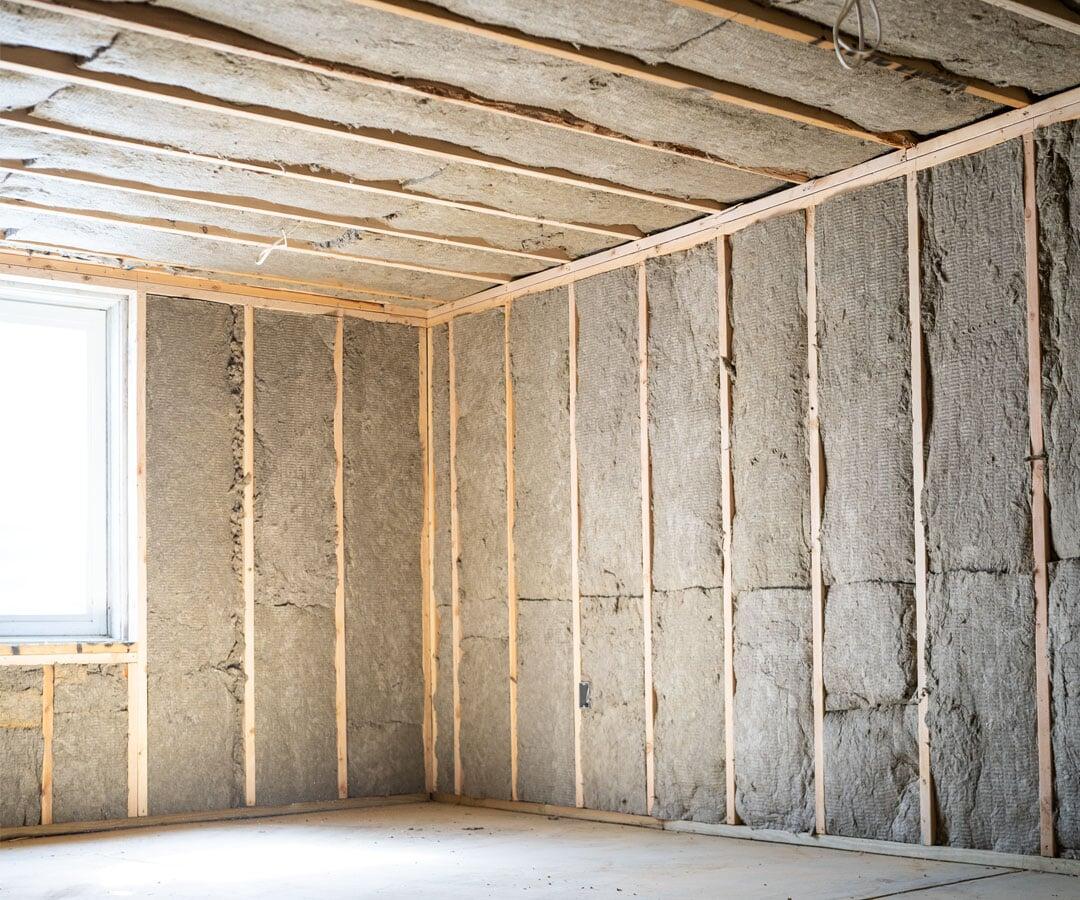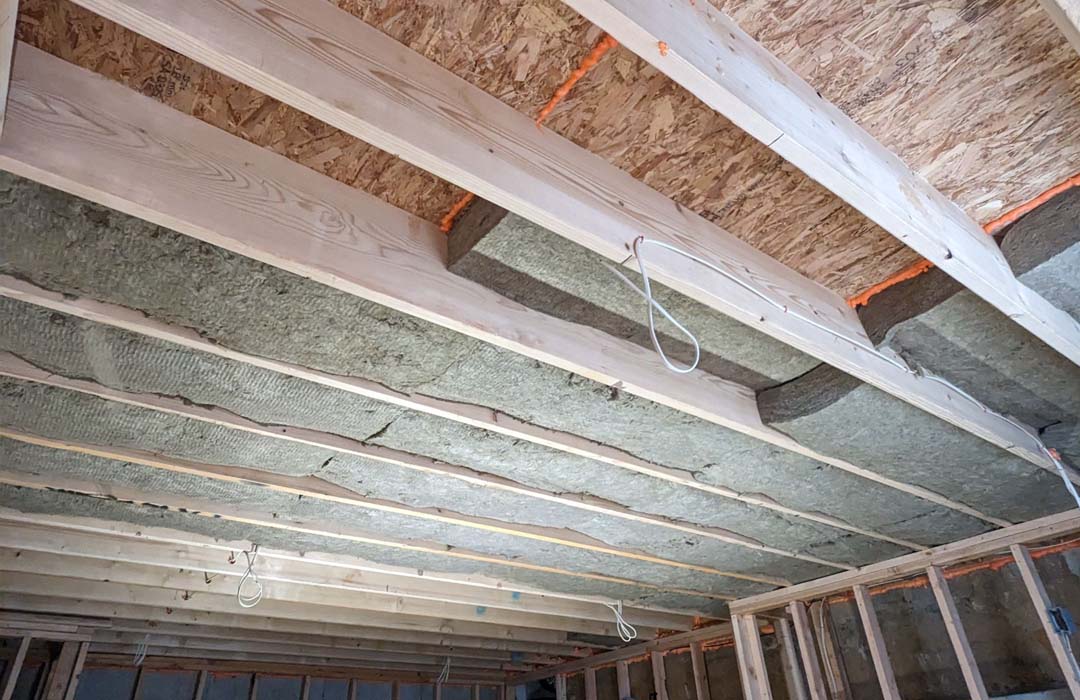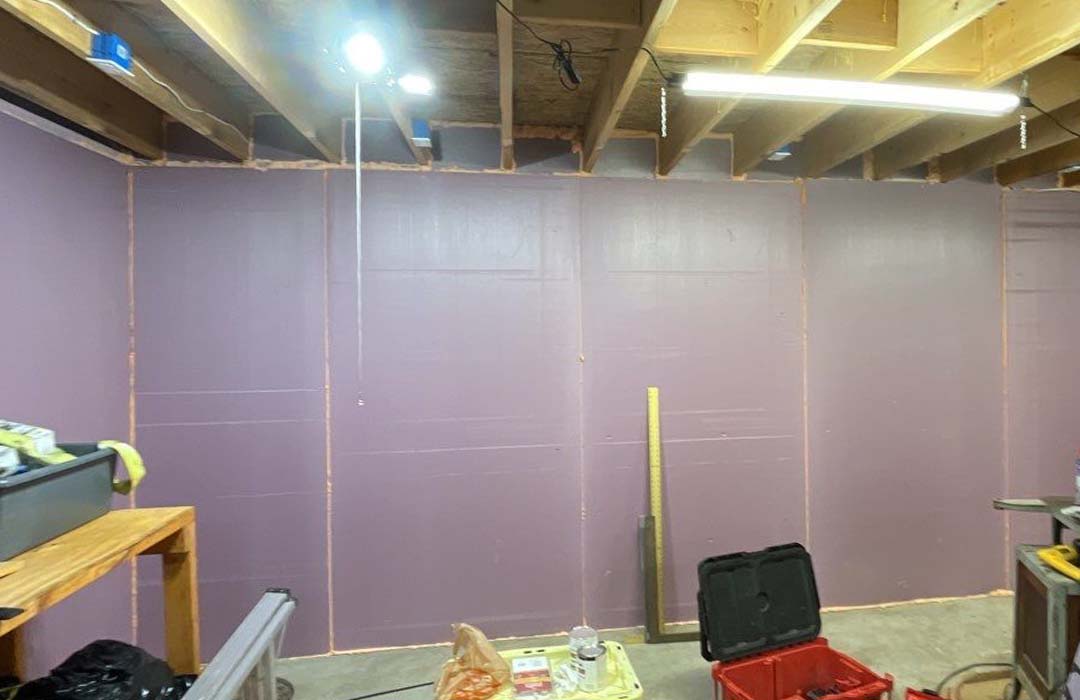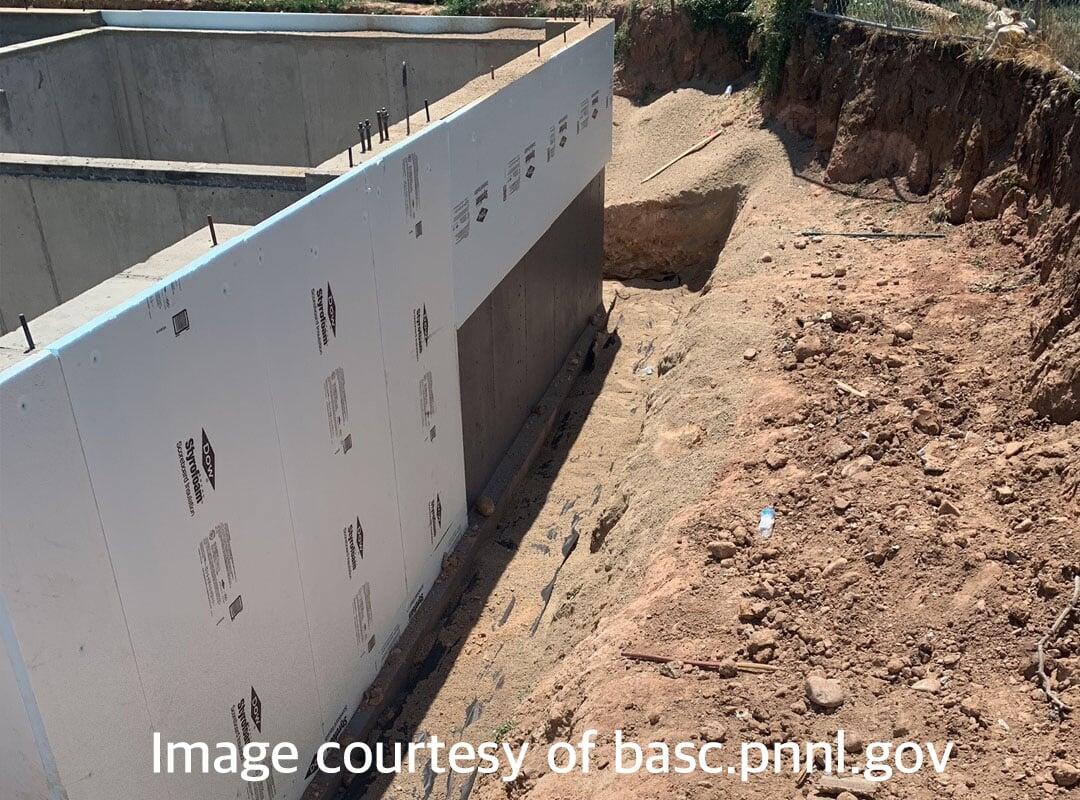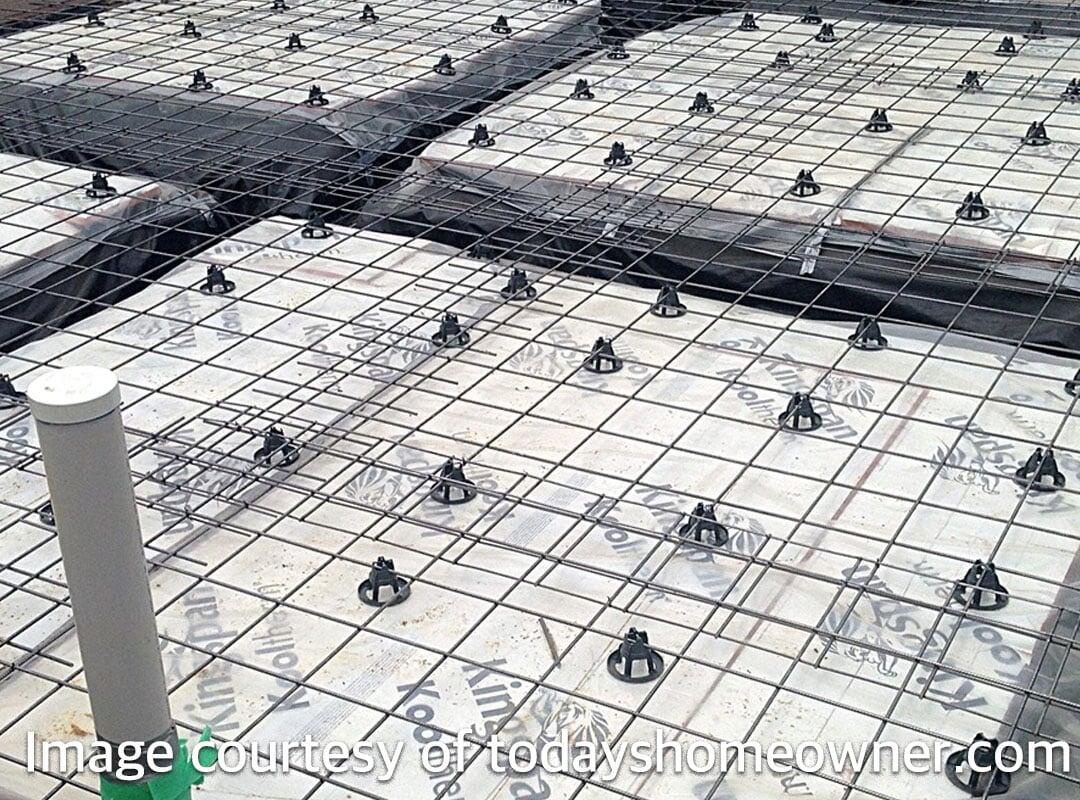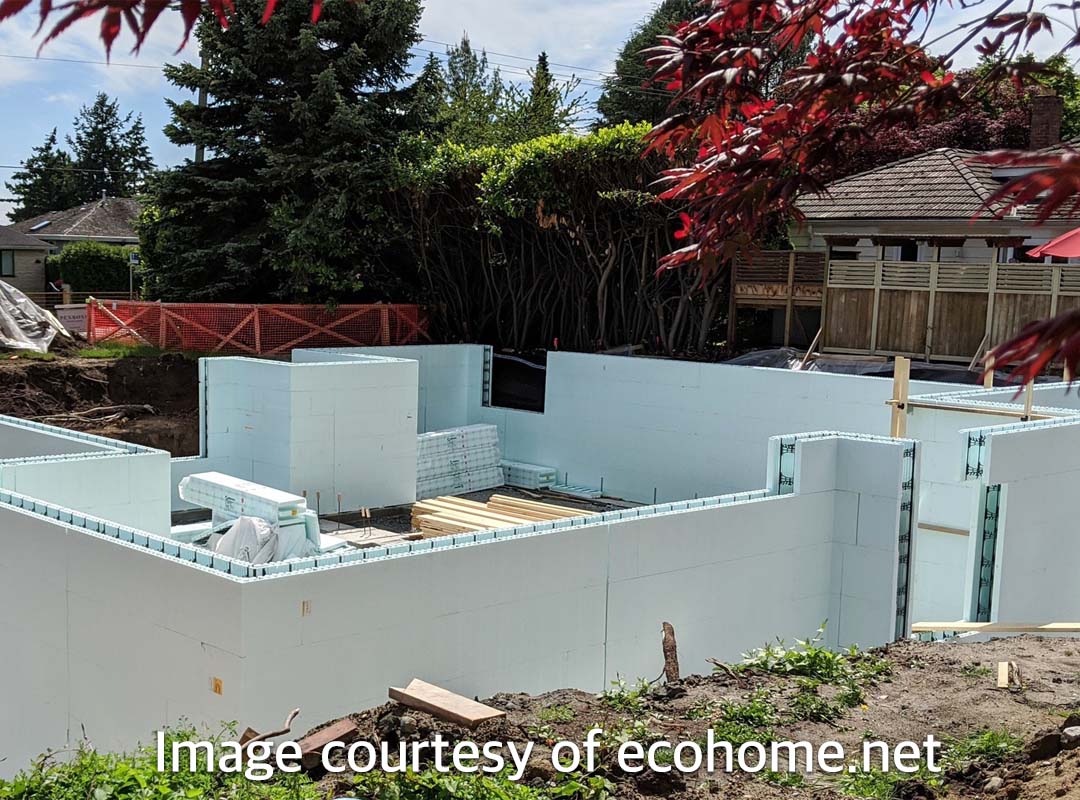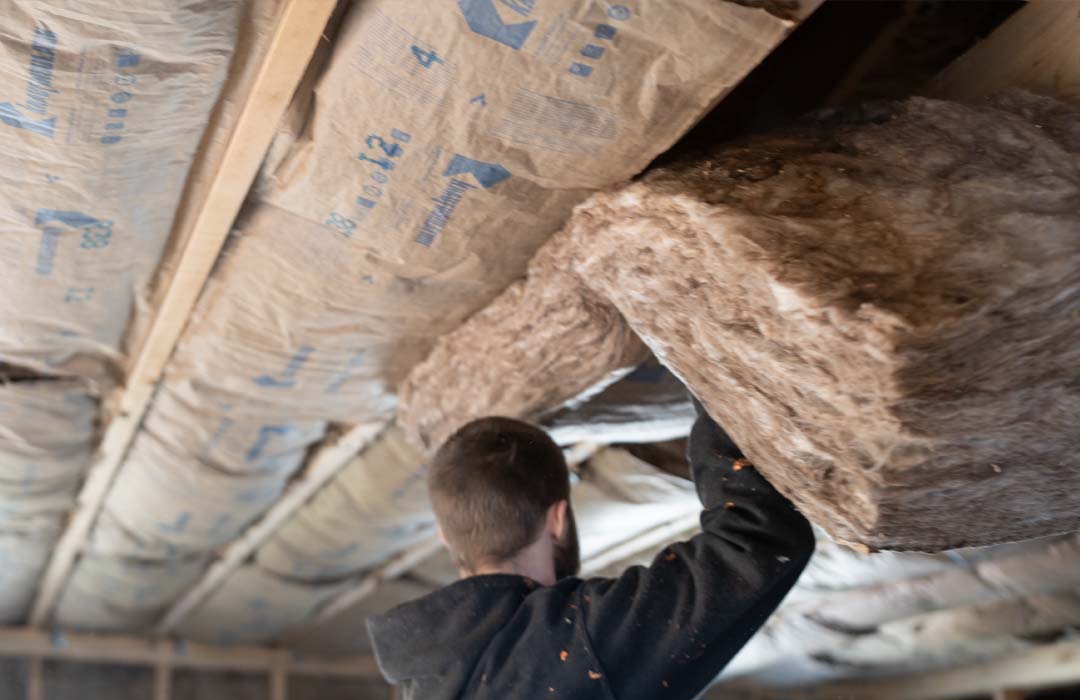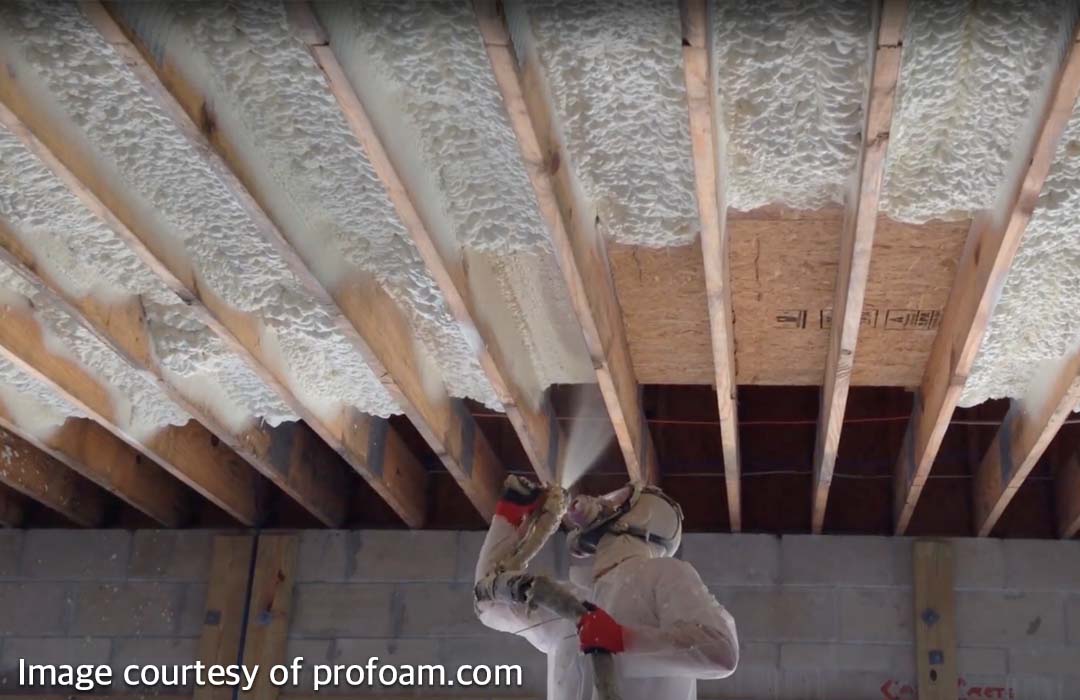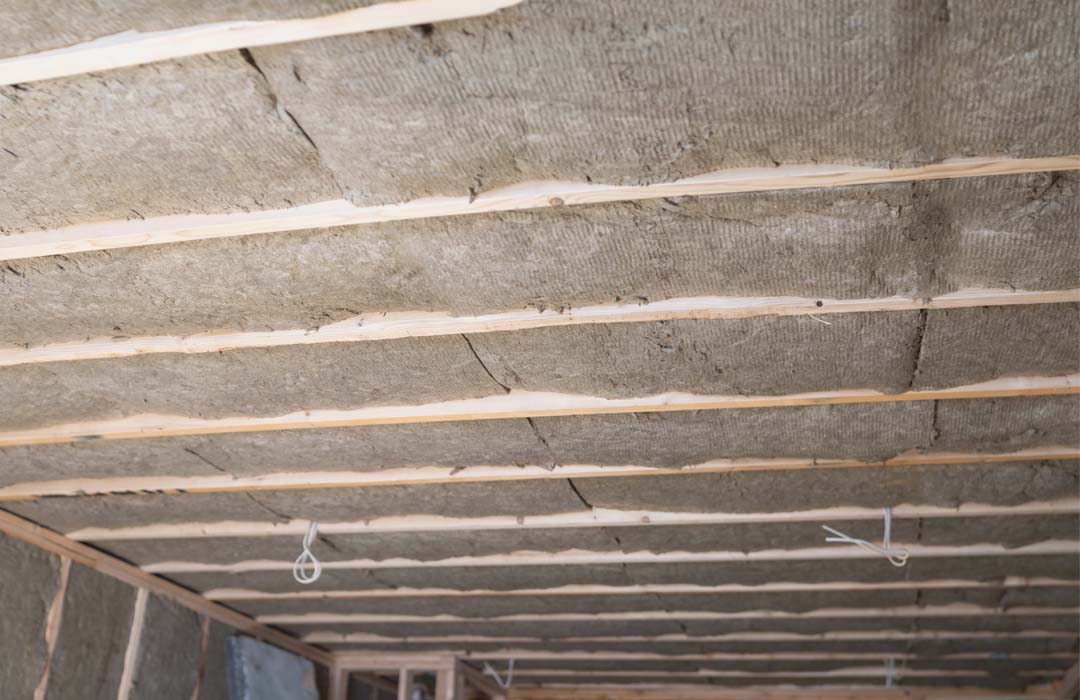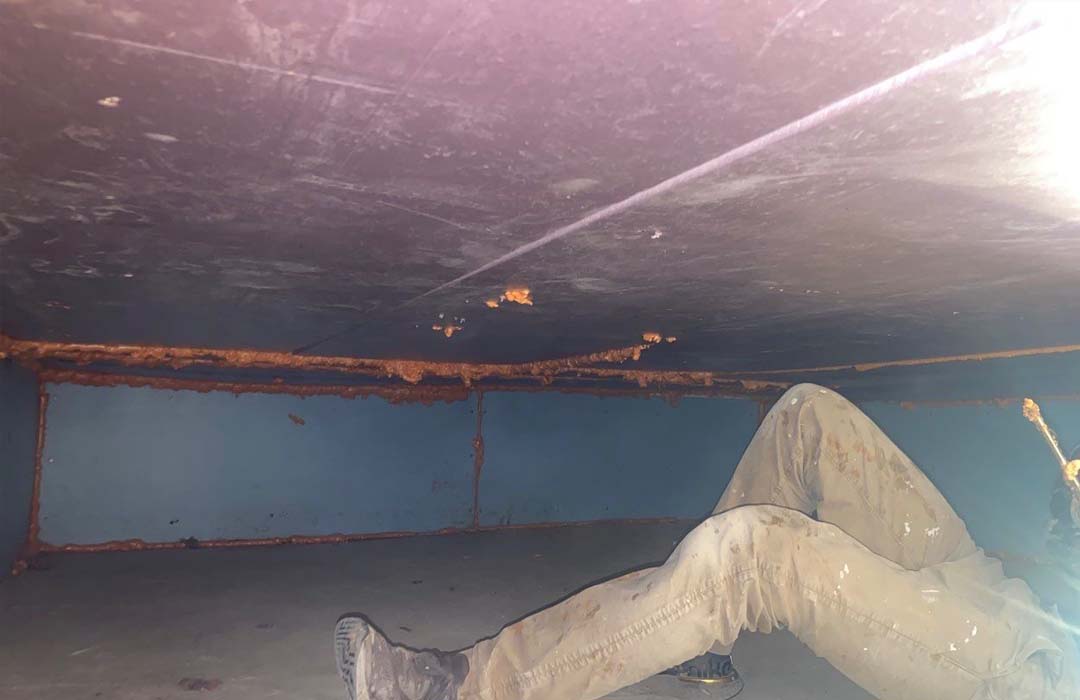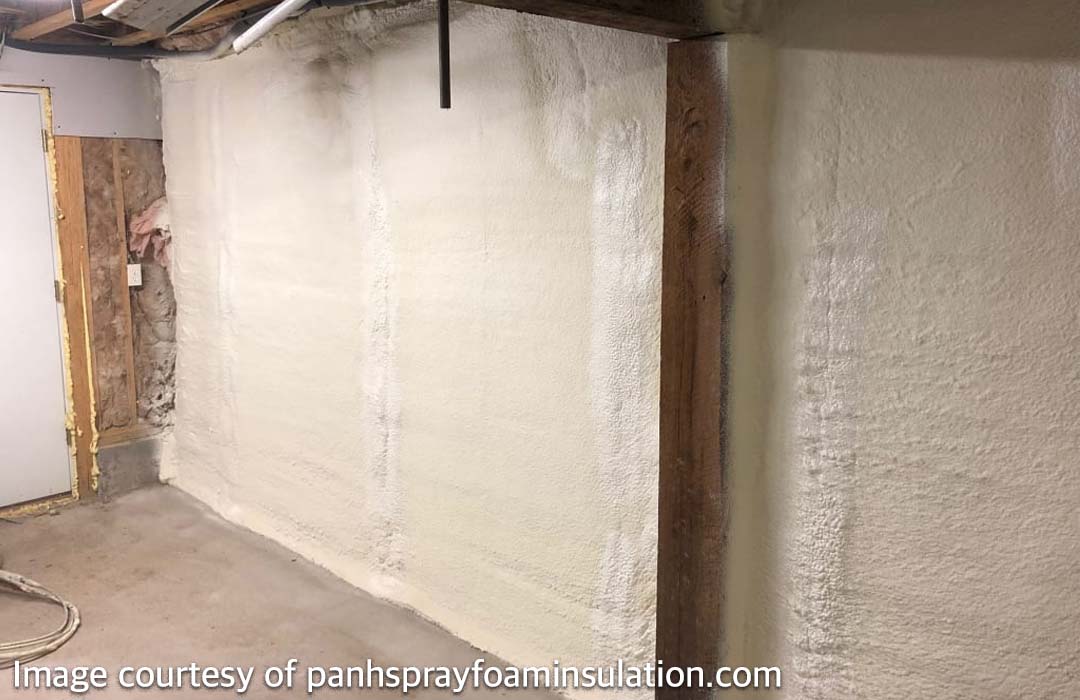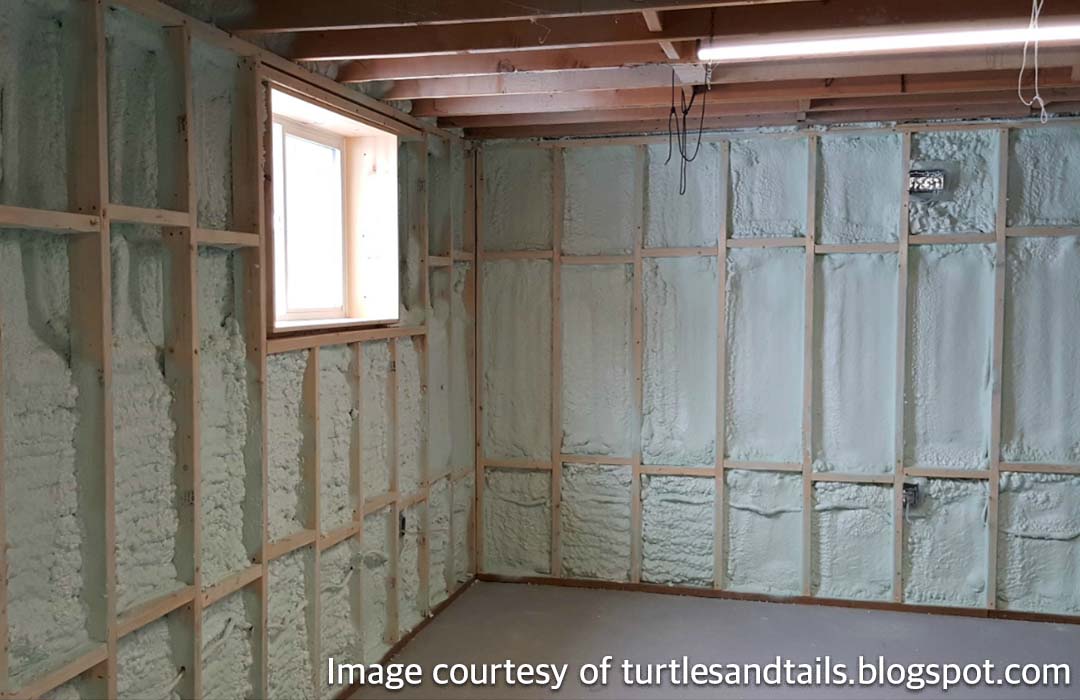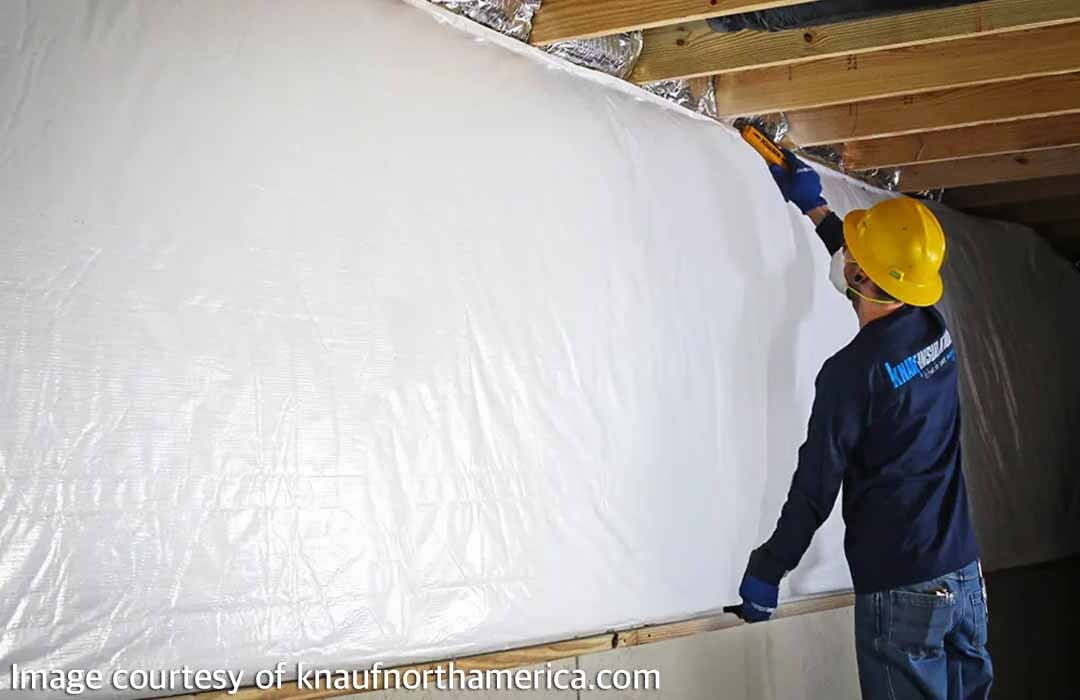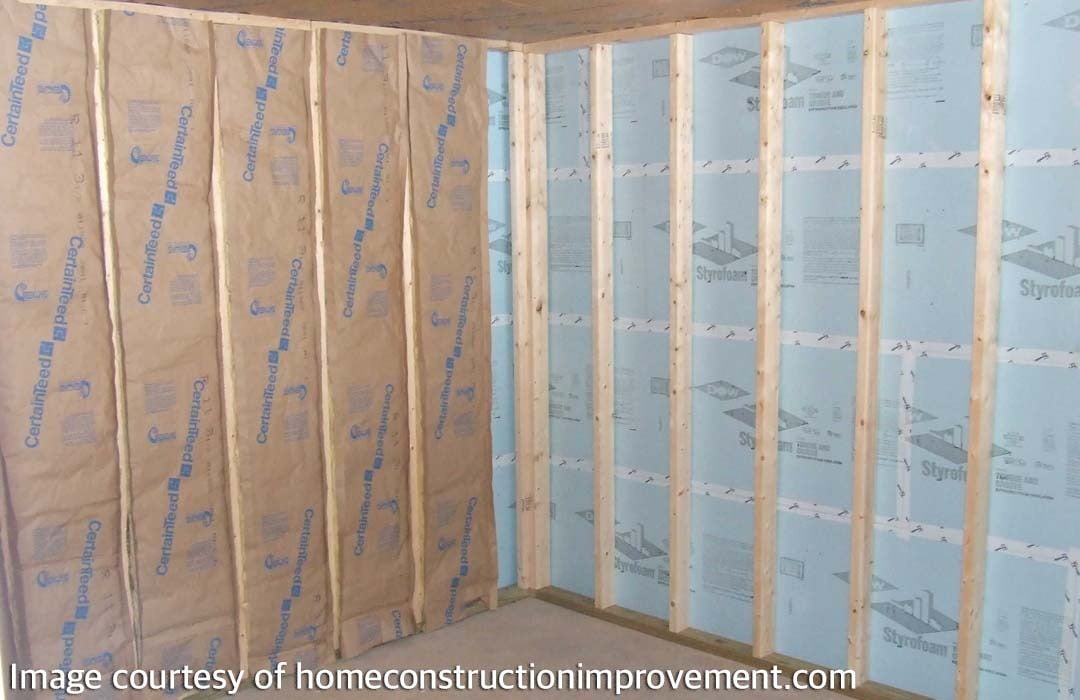Basement Insulation
Basement insulation in our climate zone can be complicated. We break it down here.
Basement insulation in our climate zone can be complicated in our climate zone. We break it down here.
The type and placement of insulation in basements varies depending on many factors including if the basement is finished, what the basement is used for, and what is in the basement. We will go into a lot of details, facts to consider, and pros and cons for each major method, as well as cost levels. Before reading further down the page, if you aren't familiar with architecture/building terms it would be a good idea to reference the definitions I provided under this text to provide you with further context. Also, keep in mind this page is written with climate zones 4 & 5 in mind, which includes PA, NJ, and DE. If you live somewhere else, check your climate zone to see if what is on this page is relevant for you.
This is a long page with a lot of information that will be very helpful to inform you of all of your options regarding insulating your basement.
This page is best viewed on a desktop or laptop. Use the button below to send yourself an email with the link.
While you can skip around the page and read what is only relevant to you, there are a few terms I want to define so there is no confusion:
Subfloor:
The floor of the first floor and the ceiling of the basement. This includes the floor joists (wood beams) and the plywood/planks ontop of the wood beams.
Slab:
The concrete floor of the basement. This can sometimes be dirt or stone. For simplicity on this page, I will refer to all basement floors as the slab.
Grade:
Grade the the level of the ground outside. Above grade is above ground. Below grade is below ground.
Foundation Walls:
The walls of the basement. Usually poured concrete, block, or stone.
Conditioned Space:
Area of the house that is within the thermal envelope that is heated and cooled. All areas in the conditioned space shares air and heat.
Rim Joists:
The floor joist (floor beams) that connects all of the other floor joists at the end. The other side of the rim joists is the exterior of the house.
There are Two Main Areas We Can Retrofit Basement Insulation
There are Two Main Areas We Can Retrofit Basement Insulation
The Sub Floor
There are less options for types of insulation in the subfloor, usually either batt/rolled insulation or spray foam, but it opens other factors that need to be considered. When you install insulation in the subfloor you are separating the basement from the conditioned space of the house, meaning that the air, humidity level, heating, and cooling that was shared with the basement before will now be cut off.
This means that now in the winter the basement will become much colder and in the summer the basement will become warmer and more humid. This is a problem when you have pipes, you heater, or your washer and dryer in the basement.
Since basements are mostly below grade and unvented, the temperatures usually won't be as extreme as the outside or something like an attic. Usually the foundation walls will stay relatively mild throughout the seasons. That being said, it is still possible for it to get cold enough for pipes to freeze so that has to be something that is carefully considered.
Basement Sub Floor Insulation Pros:
• Is more affordable than wall insulation
• Shorter return on investment than wall insulation (since it is cheaper and more effective for the money)
• Is not effected by minor to mild basement water intrusion
• Very unlikely to need additional HVAC work
Basement Sub Floor Insulation Cons:
• Likely to make it too cold to use in the winter for laundry or storage
• May make it more humid in the basement in the summer*
• Need to prevent pipes from freezing
• Is not suitable to finish a basement
The Foundation Walls
There is a long list of methods and materials that can be used to insulate basement walls. All of the methods have their pros and cons, which we will get into later.
Some examples of types of basement wall insulation:
• Solid foam board directly against the foundation walls or drainage mat
• Spray foam directly against the foundation walls or drainage mat
• Batt/Rolled insulation in framed 2x4 walls
• Spray foam in framed 2x4 walls
• Vinyl or Foil faced basement insulation rolls
• Rolled radiant barrier
While insulation in the subfloor separates the basement from the conditioned space, insulation on the foundation walls establishes the basement as conditioned space. That means the basement will be the same temperature as the rest of the house, as long as the HVAC is configured correctly.
Foundation Wall Insulation Pros:
• Makes the basement part of the conditioned space, making it usable all year round
• No need to worry about pipes freezing
• Makes the basement ready to be finished
Foundation Wall Insulation Cons:
• Is costly compared to subfloor insulation
• If the slab is uninsulated it is costly to add slab insulation and may shorten the ceiling hight/headroom
• Might required HVAC work to deliver the correct amount of heating/cooling to the basement
• Should have a drainage system before installing this insulation
Those are the places where it's possible to retrofit insulation. Below are some more places that are impractical or impossible to add insulation to but can be done during construction. Most of these are required on new construction but are rare to find on home built before the 2010s. You can skip to this section and go right to the section that compares the different methods and materials for basement subfloor insulation and basement wall insulation with the button below.
Other Places For Basement Insulation Only Possible During new Construction
Other Places For Basement Insulation Only Possible During new Construction
Exterior Insulation
That blue material is solid foam board applied to the outside of the foundation wall. When they are finished work on the foundation everything shown will be below grade. You can see the ground level on the top right of the image.
Under Slab Insulation
That white material is solid foam board installed on the ground before the concrete slab is poured. The grid in the picture is the rebar support for the concrete. This insulation is unfortunately very to find completed.
Comparing Types of Basement Sub Floor Insulation
Fiberglass Insulation
Fiberglass is a good option for basement ceilings (subfloors) because they have a very high Rvalue per dollar. You can get the best of all worlds by installing fiberglass insulation and then installing solid foam board insulation on top of it.
Basement Fiberglass Insulation Pros:
• Is affordable
• Faced fiberglass comes with a class II vapor retardant that is good for our climate zone
• High Rvalue/$ ratio
• Easy to install around Obstacles
• Material is safe after initial installation
Basement Fiberglass Insulation Cons:
• Does not insulate the joists
• Needs a separate subfloor air sealing step
• Does not stand up well if directly exposed to water
• Flammable
Spray Foam Insulation
IMW Specialists does not install spray foam. It is a dangerous and toxic process that is unhealthy for the technicians and for the clients. When doing spray foam homeowners need to leave for 3 days while the foam off gasses dangerous chemicals.
Basement Spray Foam Insulation Pros:
• Can have a high Rvalue in a small space
• Can be installed in tight and hard to reach spaces
• Does not need a separate subfloor air sealing step
• Is mostly water proof
• Is a vapor barrier (with closed cell foam)
Basement Spray Foam Insulation Cons:
• Is very expensive
• Is toxic
• Is usually flammable
• Makes future repairs extremely difficult
• Can block access needed for termite inspections
• Does not insulate the joists
Mineral Wool Insulation
Mineral wool, often referred to as the brand name Rock Wool, is a great alternative to fiberglass batt insulation. Rock Wool 1ups fiberglass batts in every aspect other than cost. And Rock Wool comes in less sizes than fiberglass, so the picture shown above is two layers totaling 11 inches.
Basement Rock Wool Insulation Pros:
• Fireproof
• Amazing sound proofing qualities
• Resistant to water and moisture
• Material is safe
Basement Rock Wool Insulation Cons:
• Not good for joists with uneven spacing
• More expense than fiberglass
• No built in fastening. Needs straps installed if it is staying exposed
• Difficult to install around obstacles
• Needs two layers to fill the subfloor
• Does not insulate the joists
Foam Board Insulation
Foam board shouldn't be installed by its self on the ceiling/subfloor. It should be installed after another type of insulation fills the joist space like fiberglass or rock wool. Foam board is great because it takes away almost every con of the batt insulation options.
Basement Ceiling Foam Board Insulation Pros:
• Can be installed over faced insulation to cover the flammable material
• Can be installed over fiberglass to protect from moisture/water
• Can be installed over rock wool to keep it from falling over time
• Is not toxic like spray foam
• Creates a great air barrier
• Insulates the floor joists, which are usually thermal breaks
Basement Ceiling Foam Board Insulation Cons:
• It can be expensive
• People often find it ugly
• Is difficult to install with pipes/ductwork/utilities in the way
• Can block access to pipes/ductwork/utilities
Comparing Types of Basement Wall Insulation
Foam Board Insulation
The foam boards are directly fastened to the walls.
Foam Board Insulation Pros:
• No thermal breaks
• Great resistance against water & moisture
• Great air barrier
• Can be removed for access easily
• Can install furring strips and drywall directly on the foam board
• Acts as a vapor barrier
• Can be installed continuous with the rim joists
Foam Board Insulation Cons:
• Will need multiple layers to reach a high Rvalue
• Difficult to install after framing is in place
• Drainage should be installed before
Batt/Rolled Insulation
This can be either fiberglass or rockwool. There is a space needed behind the wall when insulating like this to allow for space to dry.
Batt Insulation Pros:
• Affordable
Batt Insulation Cons:
• Needs a vapor barrier against the foundation
• Needs an aprox 6" space behind the framing
• Has a lot of thermal bridging
Spray Foam On Foundation
The insulation is sprayed directly onto the foundation wall
Spray Foam Insulation Pros:
• No thermal breaks
• Acts as a vapor barrier (can fail if there is no drainage)
Spray Foam Insulation Cons:
• Needs drainage or dimple sheet
• Expensive
• Cam cause moisture to build up the wall
• Need to frame a wall in front of it
• Almost impossible to remove if access is needed
• Is a toxic material
Spray Foam in Framing
In this insulation method you frame the walls first and then install foam so it builds up to the studs
Spray Foam In Framing Pros:
• No thermal breaks
• Is applied thicker so it has a high Rvalue compared to framing after
Spray Foam In Framing Cons:
• Needs drainage or dimple sheet
• Expensive
• Can cause moisture to build up the wall
• Need to frame a wall in front of it
• Almost impossible to remove if access is needed
• Is a toxic material
Basement Blanket Insulation
Basement wall insulation is wide rolls of faced fiberglass insulation meant to be attached directly to basement walls. This is a budget Approach usually only done by home builders.
Batt Insulation Pros:
• Affordable
• Limited thermal bridging
Batt Insulation Cons:
• Puts fiberglass in direct contact with the concrete wall
• Has a low Rvalue (typically R10)
• Can not be installed continues with the rim joists
• Very poor resistance to water
Combination
You can also combine multiple approaches to get the benefits of each. The best combination would be foam board and batt insulation.
Foam Board & Batt Insulation Pros:
• Limited thermal breaks
• Great resistance against water & moisture
• Great air barrier
• Can be removed for access easily
• Acts as a vapor barrier
• High Rvalue
Foam Board & Batt Insulation Cons:
• Insulation needs to be done in two trips, one before framing and one after framing
• Difficult to install after framing is in place

